Q&A: Jad Tarabay (Physical Therapist)
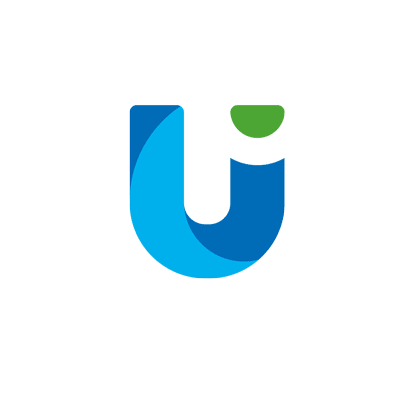

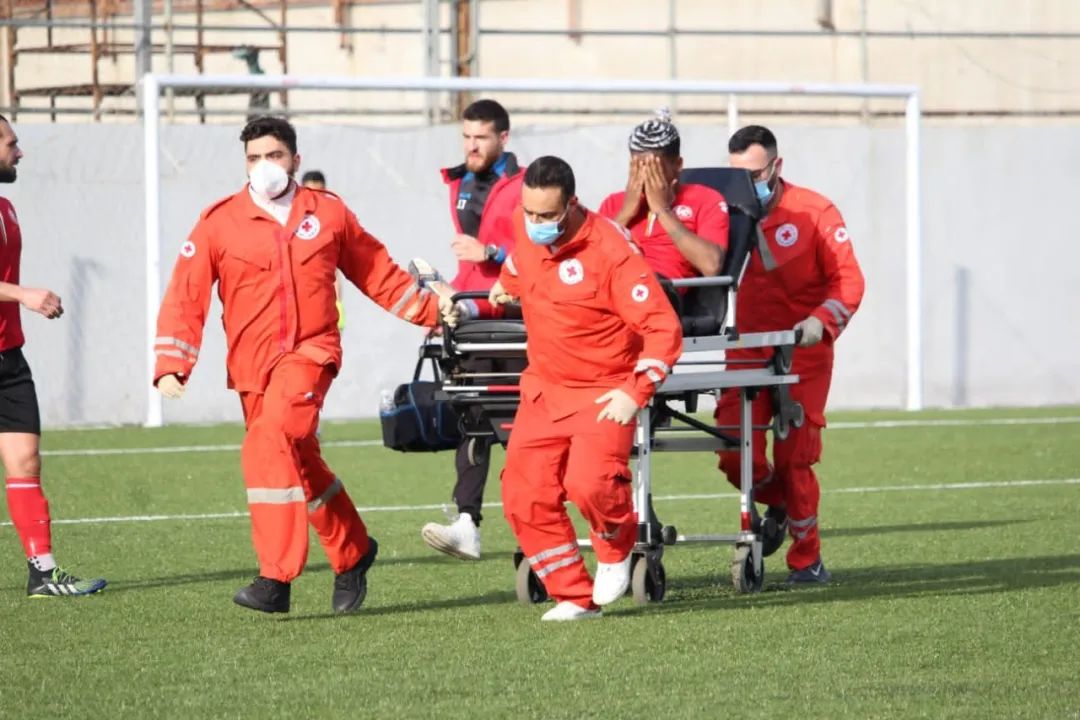
Meet Jad, originally from Lebanon he joined the UP team just a little under a month ago. He received his bachelor and DPT in Lebanon, but furthered his studies with a master degree in acupuncture from Nanjing University of Chinese medicine.
In his spare time Jad enjoys playing basketball and reading books, in order to stay ‘physically active and mindful’. It also allows him to relate to athletes recovering from injury and understanding their drive to return to sport. A third hobby of his is cooking and experimenting with healthy recipes, which gives him a creative outlet that aligns with his belief of nutritions role in recovery.
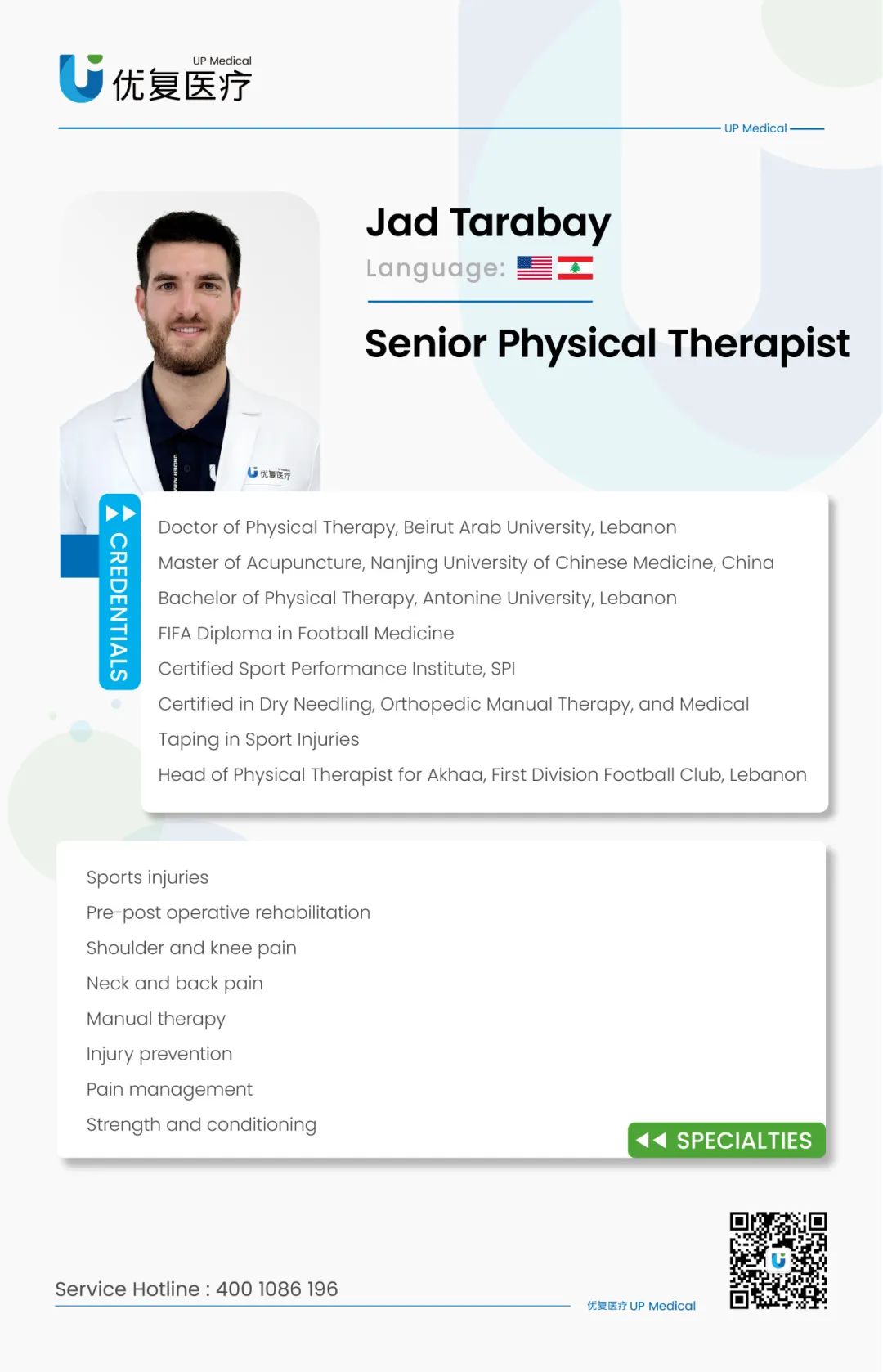
UP Medical
Read on to learn more about his journey into physical therapy, his holistic approach toward health and his reasons for joining our team!
01
How did you first decide to become a physical therapist?
Growing up in Mount Lebanon, soccer wasn’t just a game, it was a way of life. I spent my weekends playing and cheering for our city’s first-division team. What fascinated me most wasn’t just the goals or the glory, it was watching players recover from injuries and return stronger. I’ll never forget seeing our star striker come back from an ACL tear, thanks to relentless rehab. That’s when I realized physical therapy is the unsung hero of sports. At 16 I tore my hamstring . My physical therapist didn’t just fix my leg—she taught me how to move smarter and broke down biomechanics like a coach dissects tactics.

I started volunteering with my club’s medical team. I would help tape ankles and set up recovery sessions. Seeing players trust their PTs like teammates made me want to be that lifeline for others. After earning my bachelor degree I returned to my roots, joining Akhaa Ahli Aley’s medical staff. Starting as an assistant I learned to balance the high stakes of first-division play with compassionate care. When I became head of the department I prioritized prevention as much as recovery . Leading that team taught me how to unite coaches, athletes and clinicians around a shared goal: keeping players thriving, not just surviving.
02
It sounds like you are truly passionate about helping others recover. What led you to UP?
I’ve always admired the clinic’s reputation for evidence-based and patient-centered care. My clinical experience in treating orthopedic, sports injury and musculoskeletal issues matches well with the clinic’s focus.
I value UP’s commitment to conservative care first, which mirrors my philosophy of minimizing invasive interventions through targeted strengthening, mobility work and patient education. Additionally, I’m excited about UP’s investment in continuing education and mentorship.
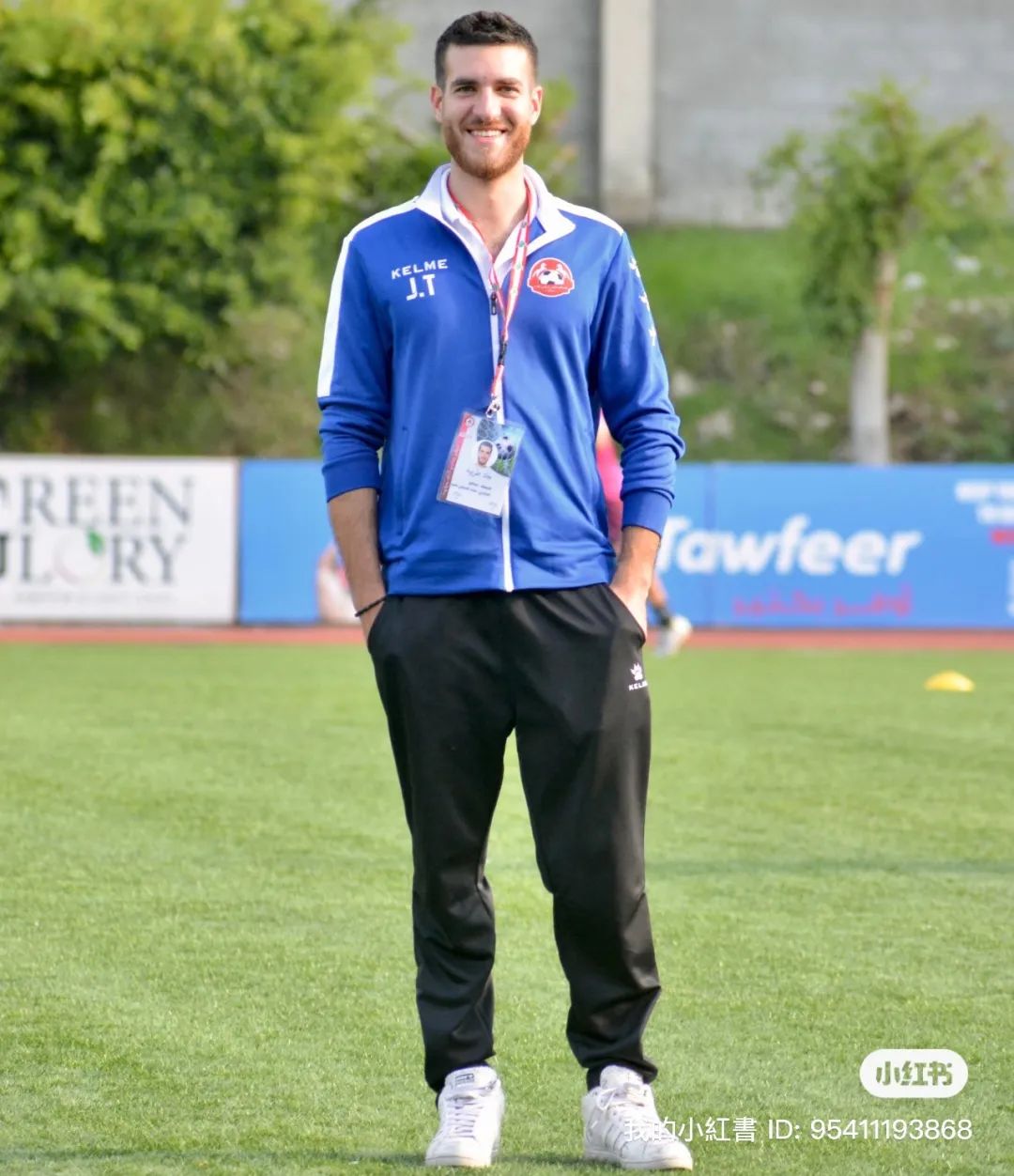
03
Did you have a role model growing up that supported this caregiving nature that you developed?
My biggest role model was my grandmother; a nurse for over 40 years. She dedicated her career to underserved communities, often working late to ensure every patient felt heard. She taught me that empathy isn’t just listening—it’s acting to meet people where they are. Even after retiring she volunteered at free clinics. This showed me the importance of service beyond the job.
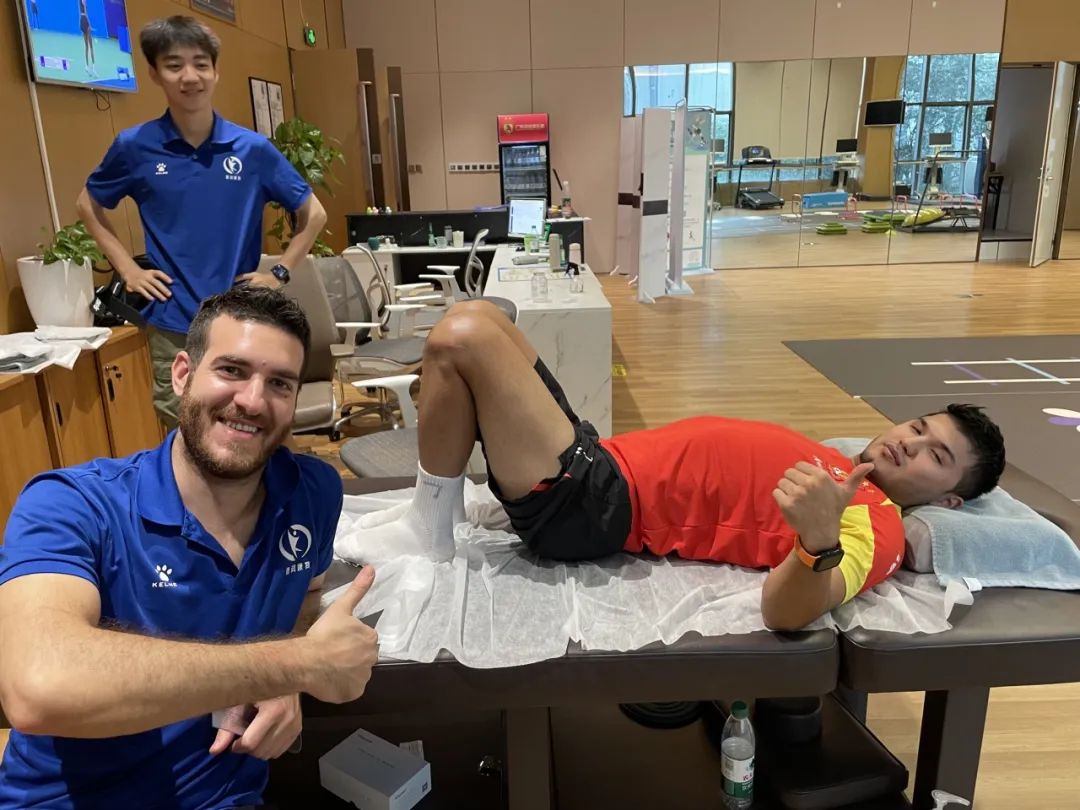
04
That’s beautiful. For those looking to come in to see you, could you share a little bit more about your specialties?
As a physical therapist specializing in sports injuries, my practice centers on helping athletes and active individuals recover from injuries, optimize performance, and prevent future setbacks.
A closer look at my specialties, and what patients often come to me for, looks like this:
1️⃣Sports Injury Rehabilitation
I frequently treat conditions like:
– Sprains/strains(ankles, knees, wrists)
– Tendon injuries (Achilles tendinopathy, rotator cuff issues, tennis/golfer’s elbow)
– Muscle tears (hamstrings, calves, quads)
– Joint instability(shoulder dislocations, ACL injuries)
– Post-surgical rehab (e.g., ACL reconstruction, meniscus repairs, shoulder labrum repairs).
My focus here is on reducing pain/swelling, restoring mobility, and rebuilding strength with sport-specific progressions.
2️⃣Overuse Injury Management
Many athletes come in with repetitive stress injuries from training, such as:
– Shin splints
– Stress fractures
– IT band syndrome
– Patellofemoral pain (runner’s knee)
– Rotator cuff tendinopathy
I address these by analyzing biomechanics, training loads, and movement patterns (e.g., running gait, throwing mechanics) to correct imbalances and prevent recurrence.
3️⃣Performance Optimization & Injury Prevention
Beyond rehab, I work with athletes to:
– Improve strength, agility, and power through targeted exercises.
– Use functional movement screens (FMS) to identify risk factors.
– Design sport-specific conditioning programs (e.g., plyometrics for basketball players, rotator cuff stability for swimmers)
4️⃣Manual Therapy & Hands-On Techniques
I incorporate:
– Joint mobilizations(for stiff shoulders, hips, or spines).
– Soft tissue release (IASTM/scraping, trigger point therapy).
– Dry needling(for muscle tension and pain relief).
– Taping/kinesiology taping for support during rehab or return to sport.
5️⃣Return-to-Sport Testing
Before clearing athletes to resume play, I use objective criteria like:
Strength symmetry testing (e.g comparing quad strength post-ACL rehab).
– Sport-specific agility drills(e.g., cutting, pivoting, jumping).
– Balance/proprioception assessments (e.g., single-leg stability on a Bosu ball)
Thank you so much for sharing and welcome to the team!

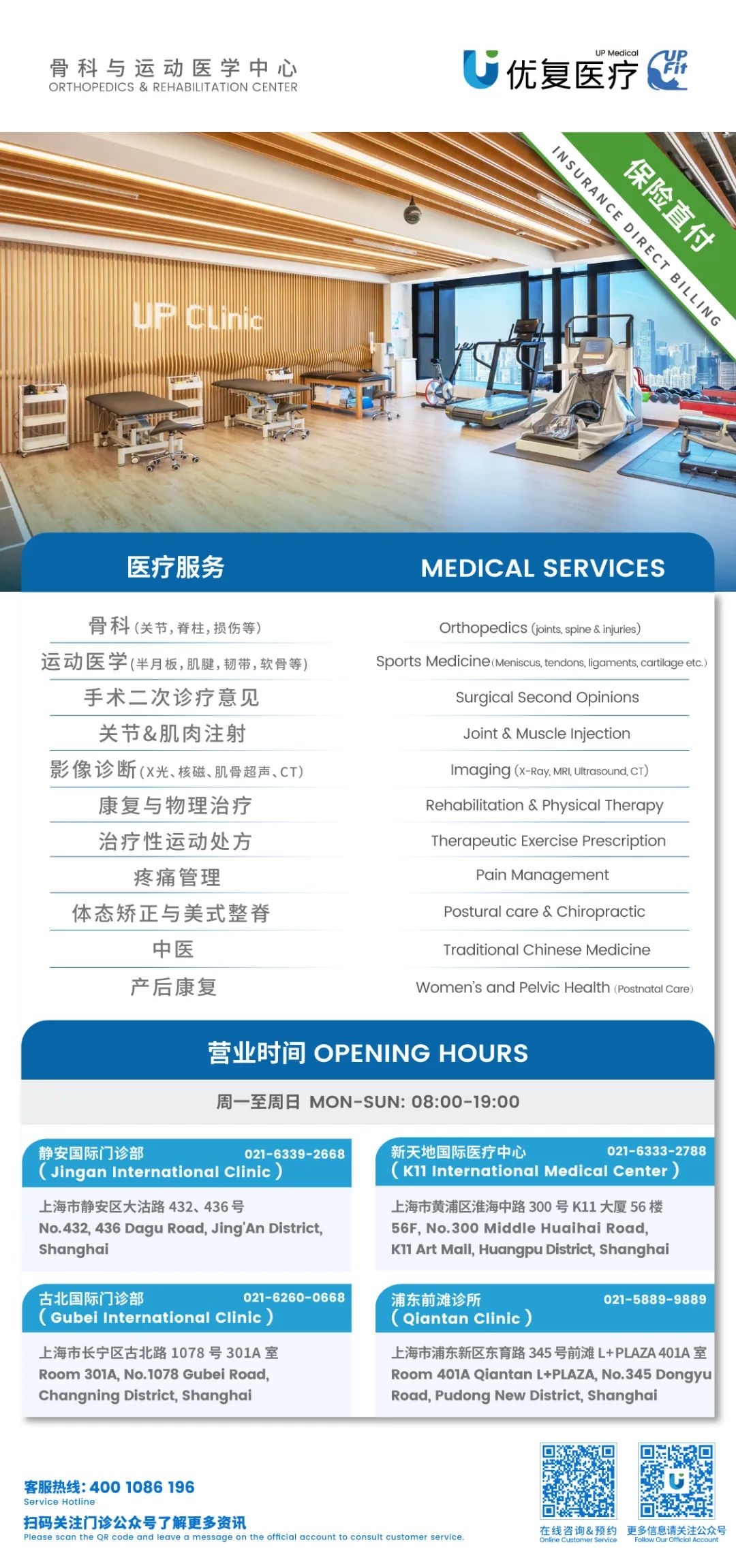
本篇文章来源于微信公众号: 上海优复康复医学门诊部

